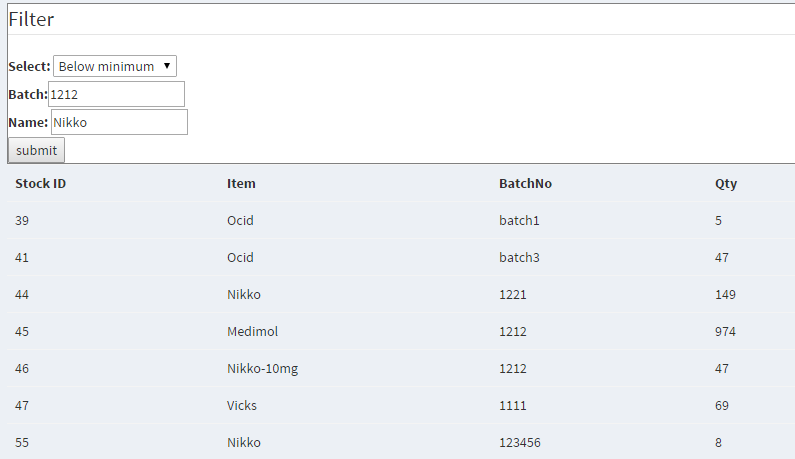I am using ASP.NET MVC with EF 6.
I have a stock page which shows all the information on stock items. Now I want to filter records too.
In picture below I have 3 options. I might filter by each option, one at a time or by combination of two or with all three.
I was thinking of writing linq query for each and every options selected. But this wouldn't be possible if filter option increases.Is there is any better way to this.
Thanks!
This is what I did in my controller.(currently dropdown has two options, excluding : " -- select one -- ")
public ActionResult StockLevel(string option, string batch, string name)
{
if (option != "0" && batch == "" && name == "")
{
if(option == "BelowMin")
{
List<Stock> stk = (from s in db.Stocks
where s.Qty < s.Item.AlertQty
select s).ToList();
return View(stk);
}
else
{
List<Stock> stk = (from s in db.Stocks
where s.Qty == s.InitialQty
select s).ToList();
return View(stk);
}
}
if (option == "0" && batch != "" && name == "")
{
List<Stock> stk = (from s in db.Stocks
where s.BatchNo == batch
select s).ToList();
return View(stk);
}
if (option == "0" && batch == "" && name != "")
{
List<Stock> stk = (from s in db.Stocks
where s.Item.Name.StartsWith(""+name+"")
select s).ToList();
return View(stk);
}
return View(db.Stocks.ToList());
}


SearchModelin such cases, Let me know if you are interested in this approach and I'll post an answer for you. – Claypoole